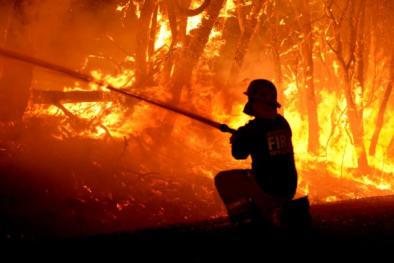Record-breaking extreme weather in Australia in 2016 devastates ecosystems

Australia’s weather was extreme in 2016, driven by humankind’s burning of fossil fuels as well as a strong El Niño, according to the Bureau of Meteorology’s annual climate statement.
That extreme weather led to devastated ecosystems both on land and in the sea, with unprecedented bushfires in regions that don’t usually burn, the worst coral bleaching on record, and has been attributed as the cause of damage to vast tracts of crucial kelp forests, oyster farms and salmon stocks across southern Australia.
The statement, released on Thursday, said the country as a whole had its fourth-warmest year on record, but locally, Sydney and Darwin broke records for both their hottest maximum temperatures and hottest minimum temperatures.
Hobart had its warmest night on record in 2016 and both Hobart and Brisbane had records for their hottest annual mean temperature fall as well. The hot and dry start to the year sparked bushfires in Victoria, Tasmania and Western Australia.
The fires that swept through the Tasmanian world heritage forests were described as the worst crisis those forests faced in decades. The usually damp alpine forests there had been dried out by earlier dry weather and then a huge number of lightning strikes – which are expected to become more common as temperatures rise – burned through forests, killing trees that were hundreds of years old.
While land burned, the sea around Australia broiled. The bureau’s statement said despite the surface temperature of the seas around Australia being consistently high in recent years, 2016 reached a new record temperature, being 0.73C above the 1961-90 average.
Off the coast of Queensland, those record temperatures led to the worst coral bleaching on record, where an estimated 22% of the coral on the entire 2,300km length of the Great Barrier Reef was lost.
In the northern, most remote and most pristine part of the reef, coral was devastated by the unusually warm water, which scientists say will become the norm in fewer than 20 years.
The bureau’s statement also notes that ocean temperatures were at record highs around Tasmania in 2016. The freakishly hot waters there have been attributed as the cause of damage to oyster, salmon and abalone industries, as well as increased stress to kelp forests, already devastated by warmer waters in recent years.
Related Content






